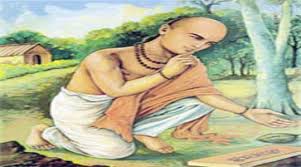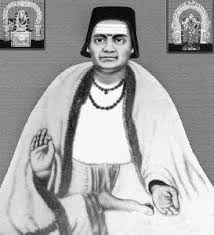Who was Bhaskaracharya?
Bhaskaracharya was the leading light of 12th Century. He was born at Bijapur, Karnataka.He is famous for his book Siddanta Shiromani. It is divided into four sections: Lilavati(Arithmetic), Beejaganit (Algebra), Goladhyaya (Sphere) and Grahaganit (mathematics ofplanets). Bhaskara introduced Chakrawat Method or the Cyclic Method to solve algebraicequations. This method was rediscovered six centuries later by European mathematicians,who called it inverse cycle. In the nineteenth century, an English man, James Taylor, translatedLilavati and made this great work known to the worl

Childhood & Early Life
Bhaskara himself gave the details of his birth in a verse in the Arya metre according to which he was born in 1114 near Vijjadavida (believed to be Bijjaragi of Vijayapur in modern Karnataka).
His father was a Brahmin named Mahesvara. He was a mathematician, astronomer and astrologer who passed on his knowledge to his son.
Later Years
Bhaskara followed in his father’s footsteps and became a mathematician, astronomer and astrologer himself. He went on to become the head of an astronomical observatory at Ujjain, the leading mathematical centre of ancient India. The centre was a famous school of mathematical astronomy.
He made many significant contributions to mathematics throughout his career. He is credited to have given a proof of the Pythagorean theorem by calculating the same area in two different ways and then canceling out terms to get a2 + b2 = c2.
His work on calculus was groundbreaking and much ahead of his times. He not only discovered the principles of differential calculus and its application to astronomical problems and computations, but also determined solutions of linear and quadratic indeterminate equations (Kuttaka). The works in calculus performed by the Renaissance European mathematicians of the 17th century is comparable to the rules he had discovered way back in the 12th century.
His major work ‘Siddhanta Siromani’ ("Crown of treatises") was completed in 1150 when he was 36 years old. Composed in Sanskrit Language, the treatise consists of 1450 verses. The work is divided into four parts called ‘Lilavati’, ‘Bijaganita’, ‘Grahagaṇita’ and ‘Goladhyaya’, which are also sometimes considered four independent works. The different sections deal with different mathematical and astronomical fields.
The first part ‘Lilavati’ consists of 13 chapters, mainly definitions, arithmetical terms, interest computation, arithmetical and geometrical progressions, plane geometry, and solid geometry among others. It also has a number of methods of computing numbers such as multiplications, squares, and progressions.
His work ‘Bijaganita’ ("Algebra") was a work in 12 chapters. This book covered topics like positive and negative numbers, zero, surds, determining unknown quantities, and elaborated the method of ‘Kuttaka’ for solving indeterminate equations and Diophantine equations. He also filled many of the gaps in his predecessor Brahmagupta’s work.
The sections ‘Ganitadhyaya’ and ‘Goladhyaya’ of ‘Siddhanta Shiromani’ are devoted to astronomy. He used an astronomical model developed by Brahmagupta to accurately define many astronomical quantities, including the length of the sidereal year. These sections covered topics such as mean longitudes of the planets, true longitudes of the planets, solar and lunar eclipses, cosmography and geography, etc.
Bhaskara II was especially well-known for his in-depth knowledge of trigonometry. Discoveries first found in his works include computation of sines of angles of 18 and 36 degrees. He is credited to have discovered spherical trigonometry, a branch of spherical geometry which is of great importance for calculations in astronomy, geodesy and navigation.
Major Works
Bhaskara II’s major work was the treatise ‘Siddhanta Siromani’ which was further divided into four parts, each of them dealing with diverse topics on arithmetic, algebra, calculus, trigonometry, and astronomy. He is considered to be a pioneer in the field of calculus as it is probable that he was the first to conceive the differential coefficient and differential calculus.

